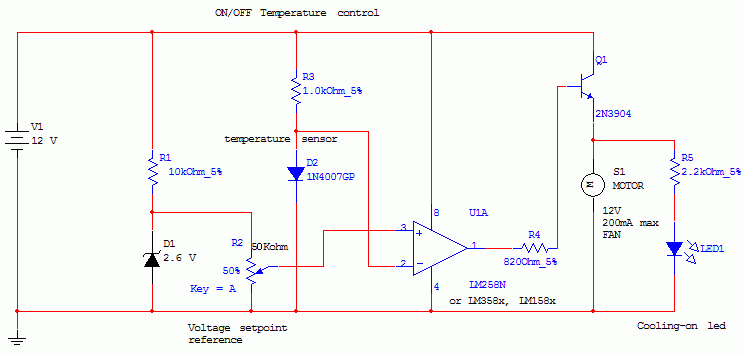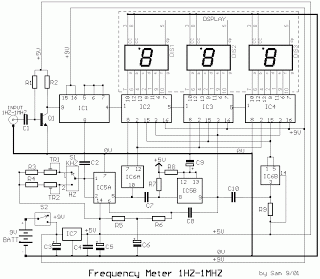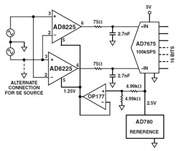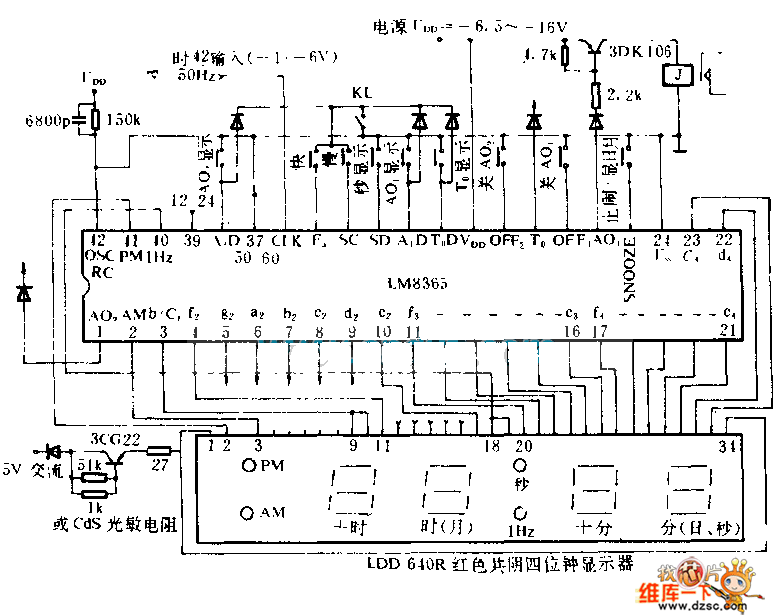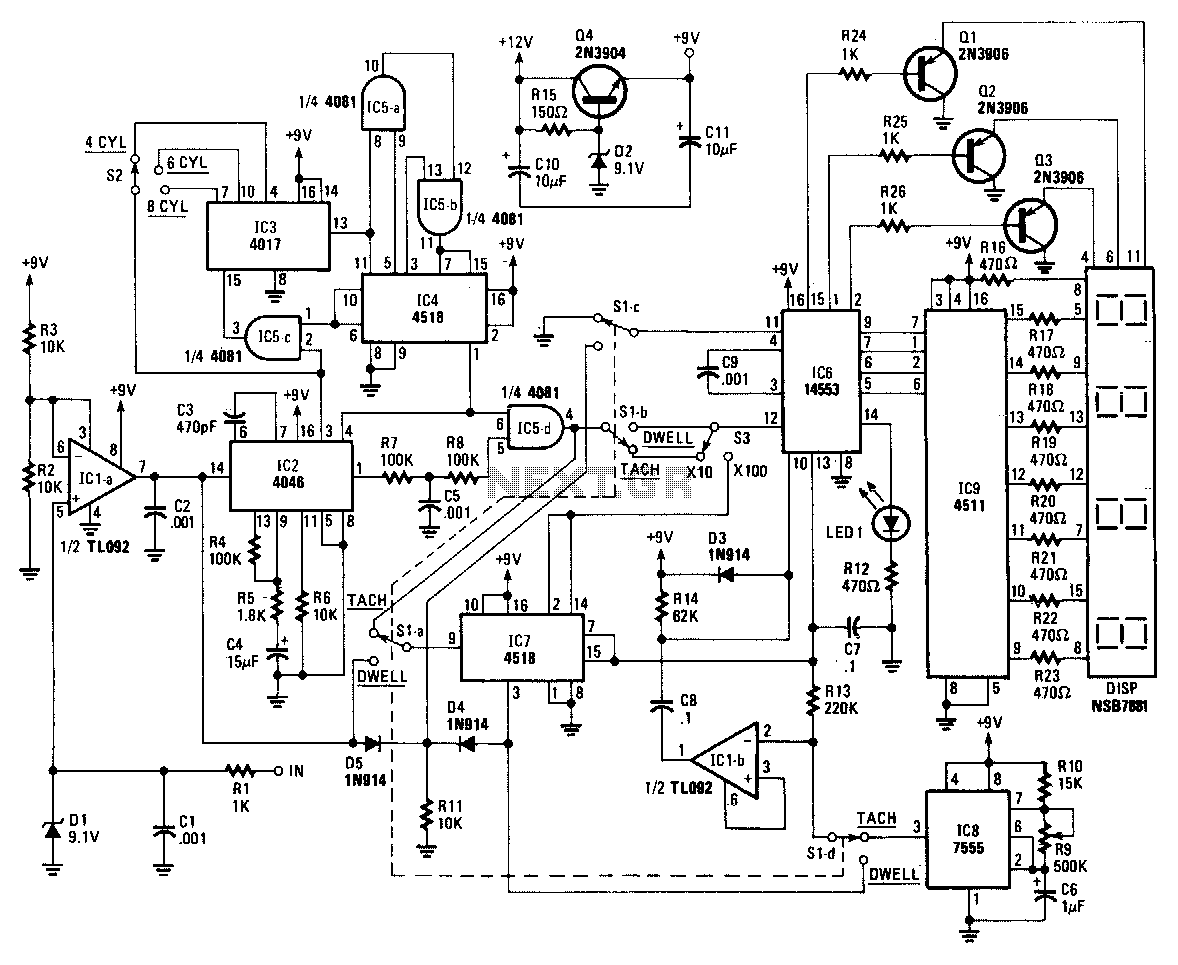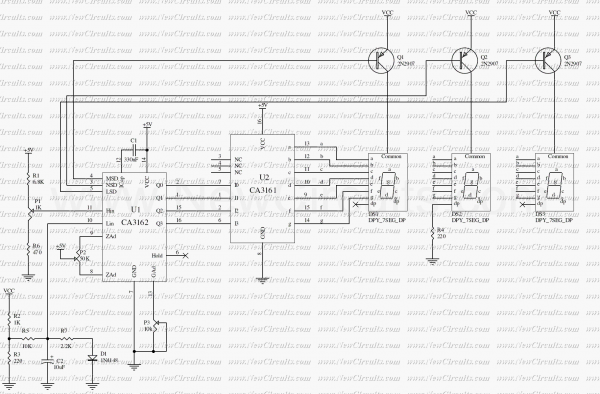
Digital temperature measuring

The output voltage of a thermocouple is converted into a frequency that is measured by a digital frequency meter. The output signal from the thermocouple is proportional to the temperature difference between the hot junction and a reference thermostat maintained at 0°C. This signal drives a voltage-to-frequency converter, which transforms the analog input signal into an output frequency. The conversion ratio is adjusted so that the frequency corresponds directly to the measured temperature in degrees Celsius. For instance, at 350°C, the output frequency is 350 Hz. The measuring setup, utilizing a Ni-NiCr thermocouple, allows for temperature measurements within the range of 5°C to 800°C, with an accuracy of ±1°C.
The described system employs a thermocouple, specifically a Ni-NiCr type, which is known for its reliability and wide temperature range. The thermocouple generates a small voltage that varies with temperature, following the Seebeck effect. This voltage is then fed into a voltage-to-frequency converter (VFC), which is a critical component that translates the voltage signal into a frequency output.
The VFC operates by adjusting its conversion ratio, which is essential for ensuring that the frequency output is directly proportional to the temperature being measured. This linear relationship allows for straightforward interpretation of the frequency reading as a temperature value. For example, a frequency output of 350 Hz indicates a temperature of 350°C, making it easy to read and understand.
The digital frequency meter is connected to the output of the VFC, which captures the frequency signal and displays it in a user-friendly manner. This setup is particularly advantageous for applications requiring precise temperature monitoring and control, such as in industrial processes or laboratory environments.
The thermocouple's operational range of 5°C to 800°C, with a specified accuracy of ±1°C, makes this measuring system suitable for a variety of applications, including material testing, furnace temperature monitoring, and other high-temperature environments. The design of the system ensures that it can provide reliable and accurate temperature readings over its operational range, facilitating effective temperature management in various settings.The output voltage of a thermocouple is converted into frequency measured by a digital frequency meter. The output thermocouple signal is proportional to the temperature difference between the hot junction and the thermostat kept at 0°C, it drives the voltage-to-frequency converter changing the analogue input signal into the output frequency with the conversion ratio adjusted in such a way, that the frequency is equal to the measured temperature in Celsius degrees, e.g., for 350°C the frequency value is 350 Hz.
The measuring set connected with Ni-NiCr thermocouple permits you to measure the temperatures within the range of 5°C - 800°C with ±1°C error. 🔗 External reference
The described system employs a thermocouple, specifically a Ni-NiCr type, which is known for its reliability and wide temperature range. The thermocouple generates a small voltage that varies with temperature, following the Seebeck effect. This voltage is then fed into a voltage-to-frequency converter (VFC), which is a critical component that translates the voltage signal into a frequency output.
The VFC operates by adjusting its conversion ratio, which is essential for ensuring that the frequency output is directly proportional to the temperature being measured. This linear relationship allows for straightforward interpretation of the frequency reading as a temperature value. For example, a frequency output of 350 Hz indicates a temperature of 350°C, making it easy to read and understand.
The digital frequency meter is connected to the output of the VFC, which captures the frequency signal and displays it in a user-friendly manner. This setup is particularly advantageous for applications requiring precise temperature monitoring and control, such as in industrial processes or laboratory environments.
The thermocouple's operational range of 5°C to 800°C, with a specified accuracy of ±1°C, makes this measuring system suitable for a variety of applications, including material testing, furnace temperature monitoring, and other high-temperature environments. The design of the system ensures that it can provide reliable and accurate temperature readings over its operational range, facilitating effective temperature management in various settings.The output voltage of a thermocouple is converted into frequency measured by a digital frequency meter. The output thermocouple signal is proportional to the temperature difference between the hot junction and the thermostat kept at 0°C, it drives the voltage-to-frequency converter changing the analogue input signal into the output frequency with the conversion ratio adjusted in such a way, that the frequency is equal to the measured temperature in Celsius degrees, e.g., for 350°C the frequency value is 350 Hz.
The measuring set connected with Ni-NiCr thermocouple permits you to measure the temperatures within the range of 5°C - 800°C with ±1°C error. 🔗 External reference
